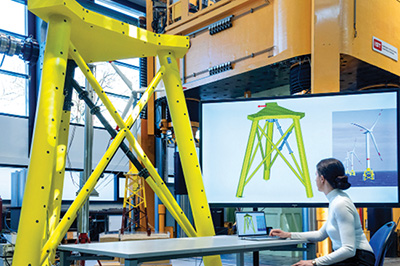Digital tool may optimise use of older wind turbines
08/07/2025
The Federal Institute for Materials Research and Testing (BAM) is developing a digital tool to help wind farm operators decide whether to continue operating older wind turbines or replace them. The aim is to increase the efficiency and sustainability of wind energy use in Germany.
Every year, hundreds of older wind turbines reach the end of their intended service life. In 2024, 555 onshore turbines were decommissioned, while 635 new onshore units were connected to the grid. However, engineering studies show that many older turbines are safe and stable enough to be used for several more years.
For wind farm operators, several questions arise. Is it worth continuing operations? Are the supporting structures still strong enough? Is it worth retrofitting the turbines or is it more economical to dismantle them completely and invest in a new turbine? This decision is particularly complex in the offshore sector, where modern wind towers generate up to 20 MW and are therefore three to four times stronger than older structures.
 | ||
| Continue operation or replace? The BAM tool is designed to help wind farm operators make the best decision for their turbines Image courtesy of BAM |
“So far, companies that operate wind farms have been left alone with this decision,” explained Ronald Schneider from the Wind@BAM competence centre. “Every dismantling simultaneously ties up scarce resources in manufacturing and installation companies, as well as in the ships that transport offshore wind turbines. These capacities are needed in Germany for an accelerated expansion of wind energy.”
Together with Jörss-Blunck-Ordemann GmbH and RWE Renewables GmbH, a team at BAM is developing a digital decision-making tool that takes all relevant aspects into account. “We want to provide interested parties with a simple modular system so that they can make the optimal decision in just a few steps,” said Ronald. “There is a great demand for such a tool in the industry.”
The tool is linked to a digital twin of the plant, into which all current data on the state of maintenance can be fed via sensors and monitoring systems. If the tool reveals any weak points, the Wind@BAM competence centre simultaneously offers specific solutions for strengthening the supporting structures. Currently, the digital decision-making tool is being tested for its practical suitability at an offshore wind farm in the North Sea.
The joint project is funded by the Federal Ministry for Economic Affairs and Climate Action with around €780,000 (approximately £669,000).